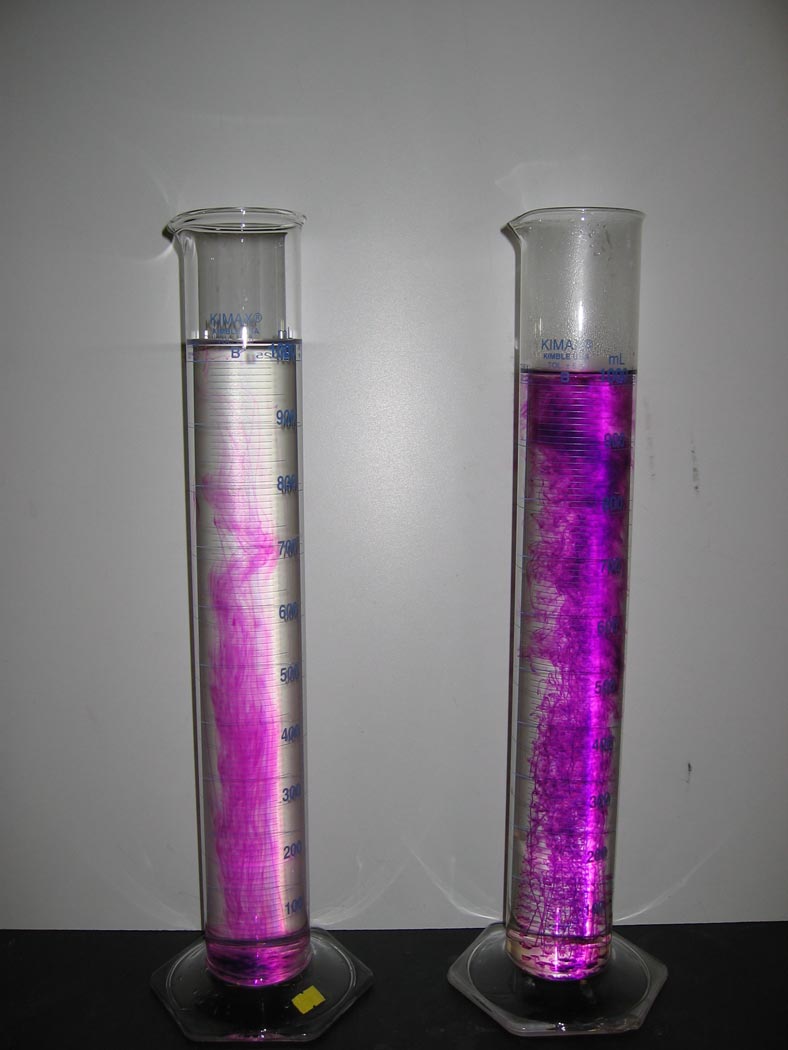Observing temperature through the kinetics of dissolution
 Crystals of potassium permanganate are added to two graduated cylinders, one containing cold water and the other containing hot water. Dramatic differences in the rate and patterns of dissolution are observed.
Crystals of potassium permanganate are added to two graduated cylinders, one containing cold water and the other containing hot water. Dramatic differences in the rate and patterns of dissolution are observed.
Ingredients: crystals of potassium permanganate, two tall graduated cylinders
Procedure: A complete recipe follows.
1. Fill one graduated cylinder with ice cold water.
2. Fill a second graduated cylinder with boiling hot water.
3. Add a few crystals of potassium permanganate to each cylinder and observe.
Understanding: In a liquid, the atoms and molecules will move faster at a higher temperature. As a result, the atoms will transport themselves through the liquid more rapidly at higher temperatures.
The addition of the potassium permanganate crystals introduces a tracer to the liquid that allows us to follow the patterns of the flow of the fluid, and the underlying atoms and molecules. The dramatic differences in the rate and pattern of dissolution in the cold and hot water demonstrate the great differences in the rate of motion of the water molecules at the two temperatures.
Hot and cold water
Question: In the dissolution of the permanganate crystals in the cold water, one notes that there is little trace of the permanganate at the top off the cylinder, and the trace becomes more vivid toward the bottom of the cylinder. In the dissolution of the permanganate crystals in the hot water, the situation is the opposite. The darkest coloration is seen at the top of the cylinder.Explain this difference in the dissolution patterns in terms of the interactions of the permanganate and water at the molecular level.
You can check your answers here.